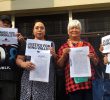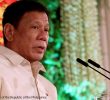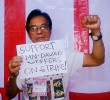Not anymore.
It is an understatement to use the word ‘change’ to describe the landscape of our journalistic practice in Mindanao. In the past, numbers were considered ‘security blanket’ for nosy reporters who would chase a ‘scoop’ in war-torn Mindanao.
To get a high risk story controversial enough to warrant a front page or banner story, some media practitioners in the 80s prefer to be in a group during coverage to ensure nobody with bad intentions could harm them. Going with a group of reporters had been thought of as the safest way to get a story from difficult sources. But not anymore.
After the November 23rd fiasco that had led to the untimely demise of the largest number of media practitioners in what is now known as the Maguindanao massacre, no one feel safe anymore. The viciousness, with which the slaughter was done in broad daylight, where so many people could have witnessed, has gripped the nation and sent chills up our spine.
A dreaded thought crossed our minds: It could have been me/us! No one as yet could fathom why the killers seemed so free in perpetrating such cold-blooded killing. And yet, everyone agrees that acts of impunity have been the order of the day in these killing fields, where witnesses were quoted to have known about people buried alive in Maguindanao.
A cameraman during coverage. (davaotoday.com photo)
In previous elections when President Gloria Macapagal Arroyo allegedly swept the votes leaving her opponent with nothing in Maguindanao, some colleagues in the media had a “sneak preview” of a threat to their security when they attempted to dig into the controversial victory. It could have been a warning to all media practitioners to toe the line, or else….
But way back then, number was still the ‘security blanket,’ and everyone seemed assured of their safety because the media practitioners, correspondents and reporters from different national and local media outfit went out to cover the event together.
Covering the Autonomous Region in Muslim Mindanao (ARMM) has never easy. The media practitioners have known the risks of going out there to cover, even “safe” events such as the culmination of the Ramadan. Such was the case of another colleague shooting the sunset in Jolo when out of nowhere, a bullet snuffed the life out of him without warning.
Call of Duty
Finding a story in Muslim Mindanao is just like walking on a land mine or on a tight rope. Any moment one could lose a leg or a life with just one wrong move.
Indeed, there is not a story worth dying for at all. But not a few media practitioners have fallen not only in pursuit of a story, but also because of that call of duty; the need to inform the public about what’s going on.
Perhaps this one big downfall for Mindanao media would teach us, media practitioners all and sundry, a lesson that we will never forget. It is the realization that we are holding on to sacred truths. It is important to assess situations on the ground from the point of view of those knowledgeable enough to be authoritative, and from unspoken ‘warnings’ such as the reluctance of police authorities in Maguindanao to accompany the group towards the ill-fated place.
Sometimes, the thing called “intuition” could spell the difference between life and death. Someone, nay some of the victims, could have sensed something wrong before they set out on that most unfortunate journey, but might have ignored it because of the much bigger consideration.
It is indeed worth a reporter’s life to listen intently to everything before making decisions in pursuing a story. But sometimes, things are beyond our control. Painful it may be to consider it this way, but perhaps it was destined to happen if only to call attention to the life situations of the people of God in Maguindanao long suffering from the hands of the powerful Ampatuan clan. All of those who died in the hands of the wicked have offered their lives for the world to see the extent of human rights abuses happening everyday of their lives.( Ging Ging Avellanosa-Valle/davaotoday.com/ davaotoday.com)










